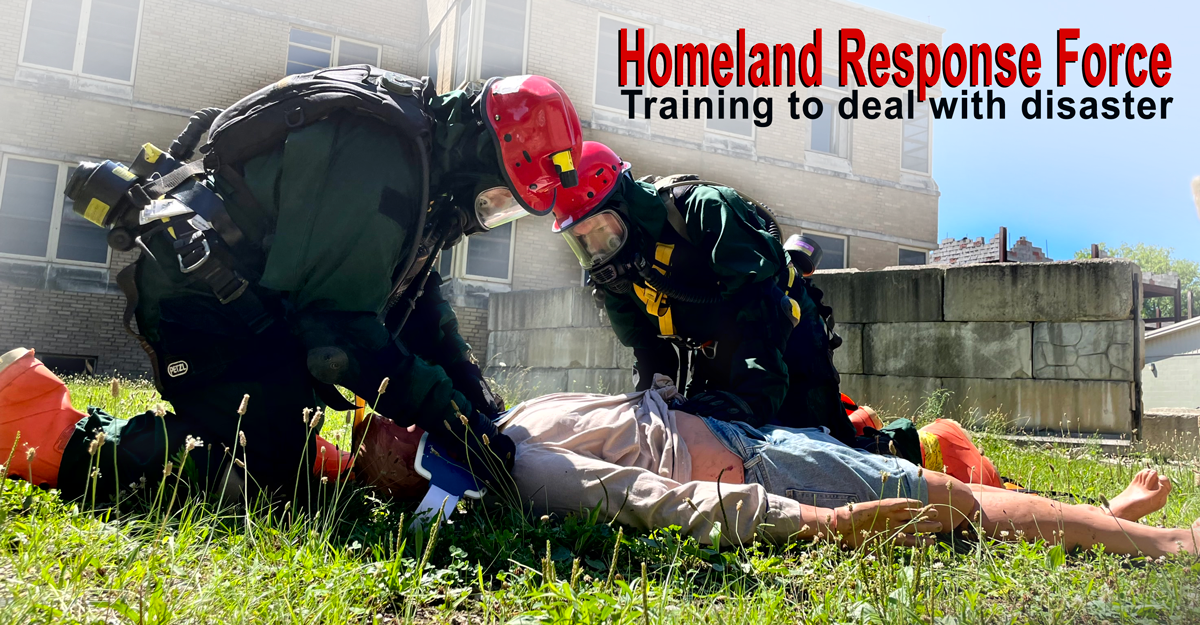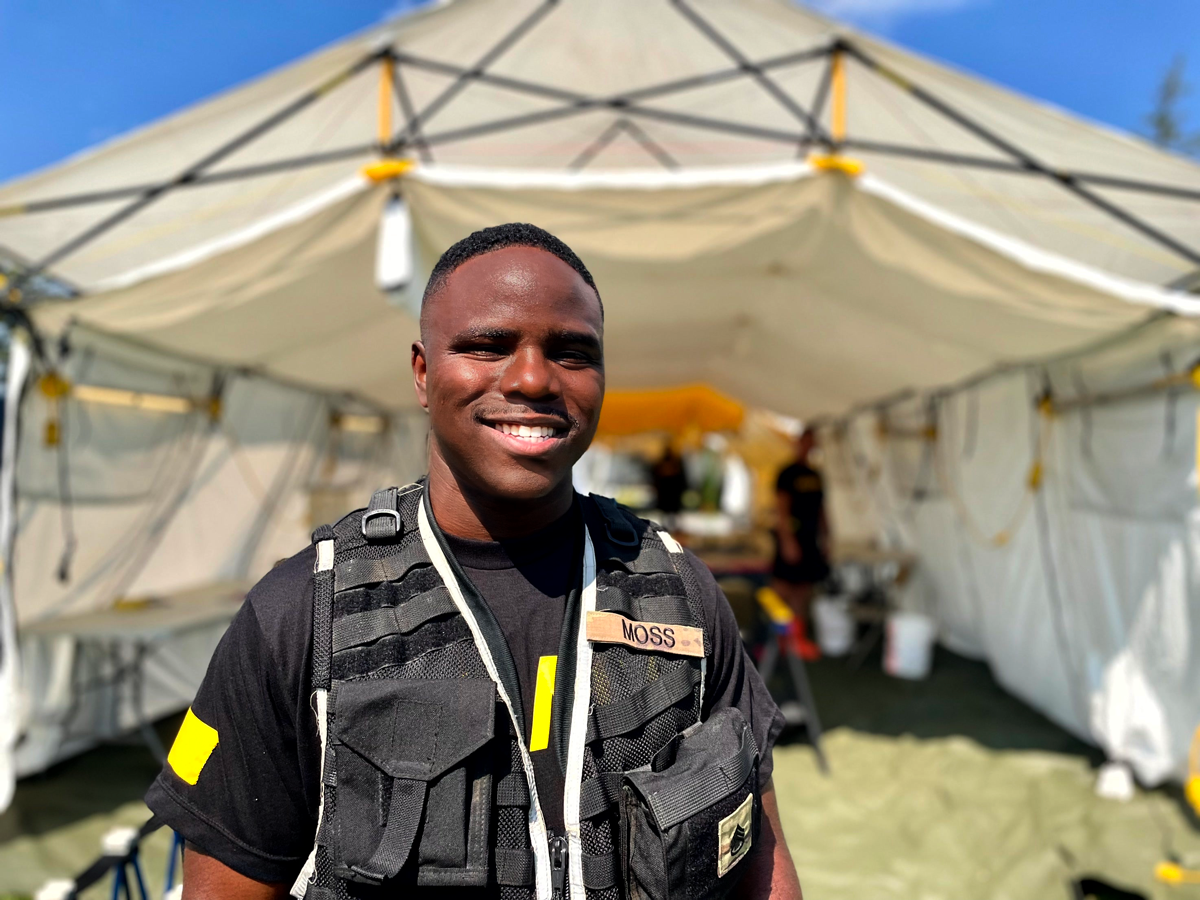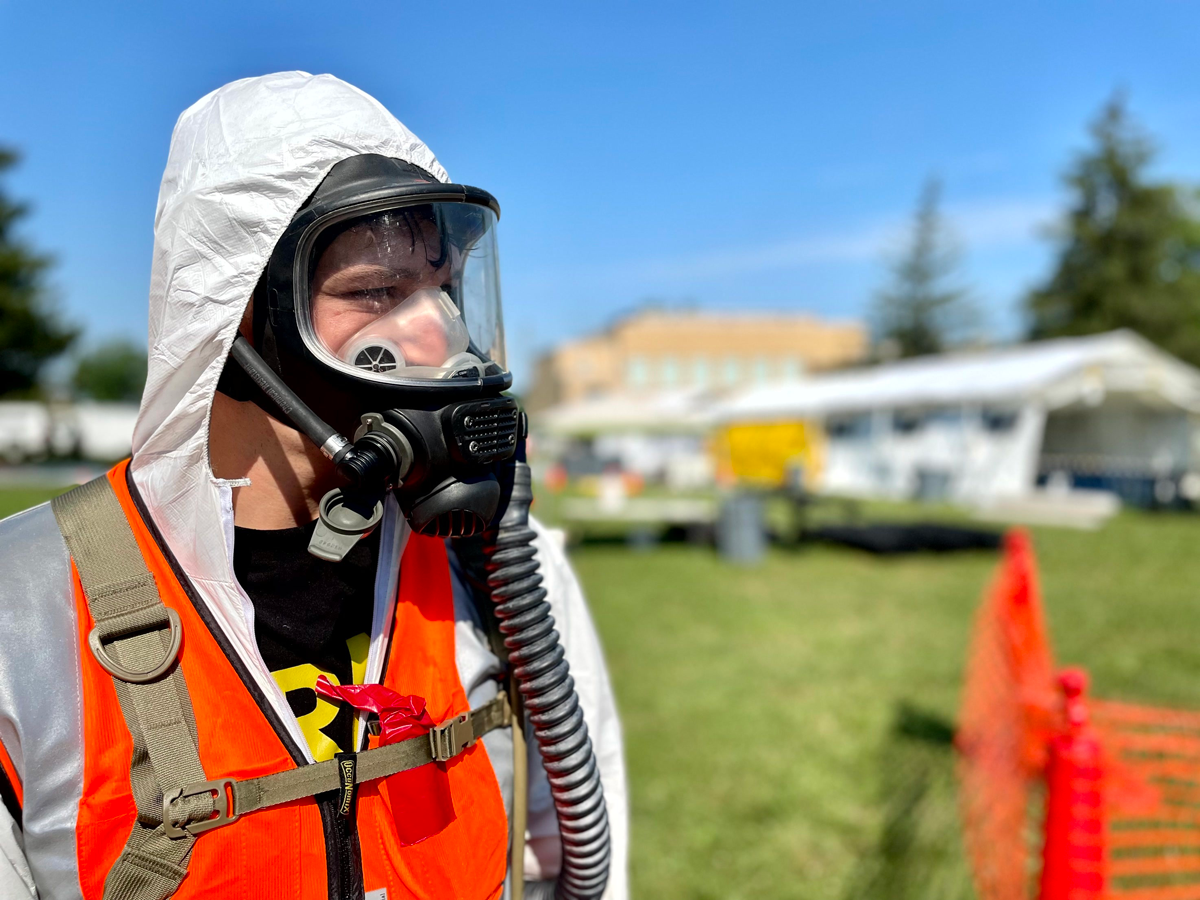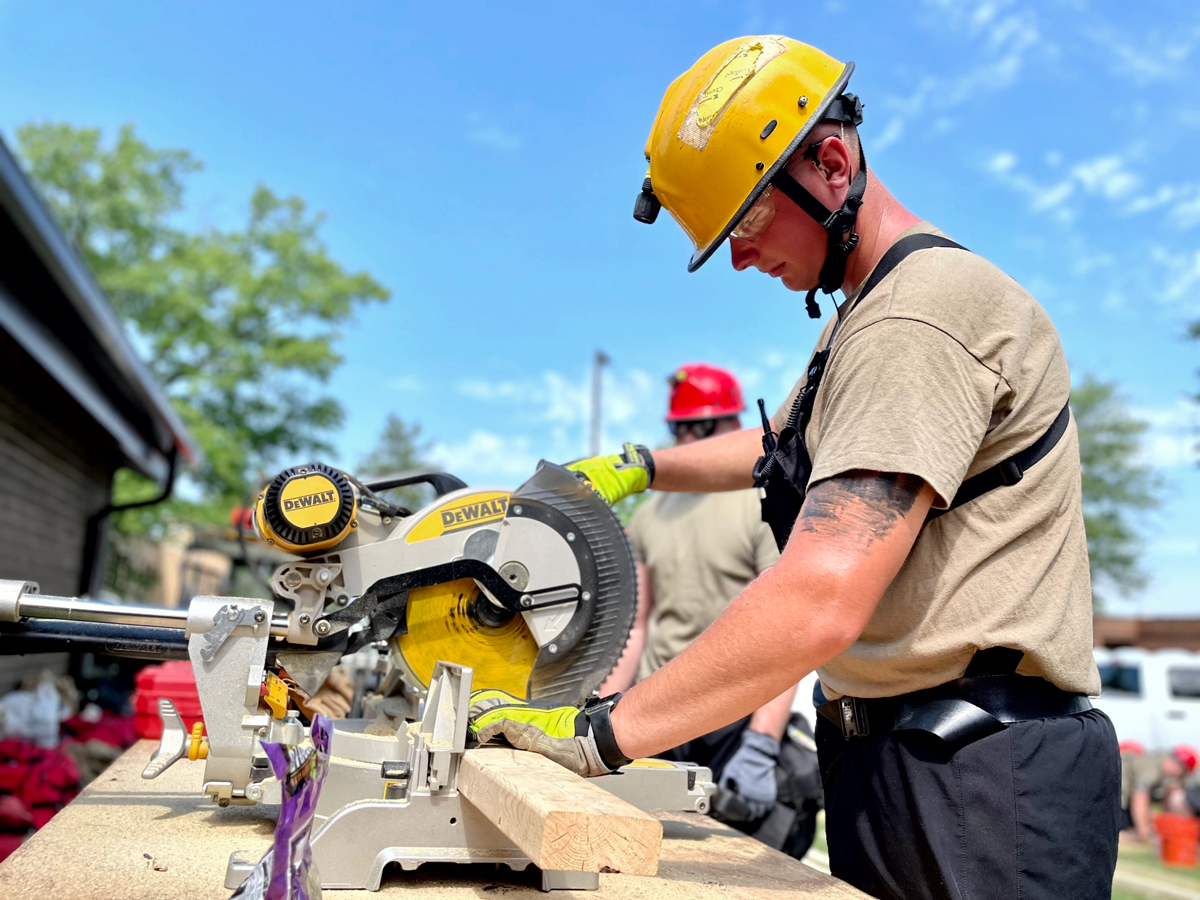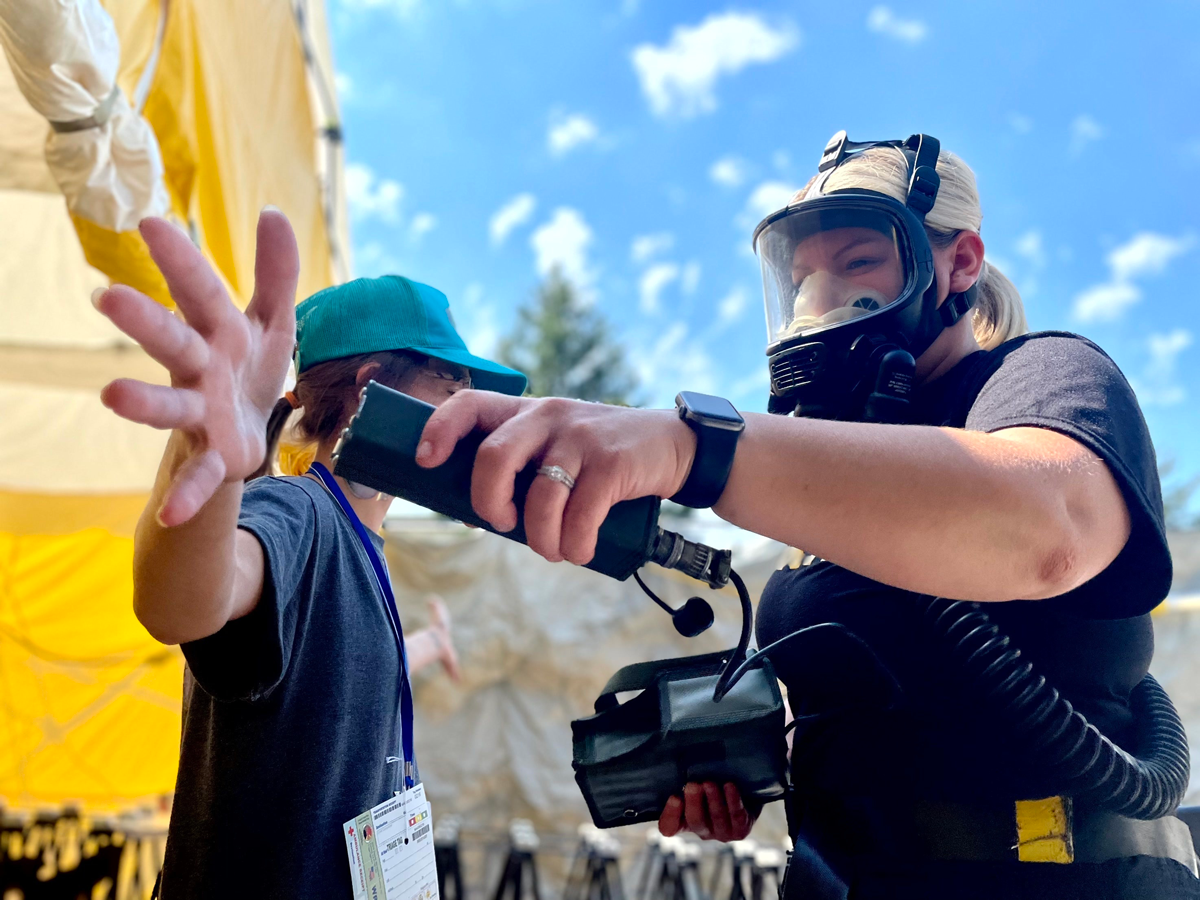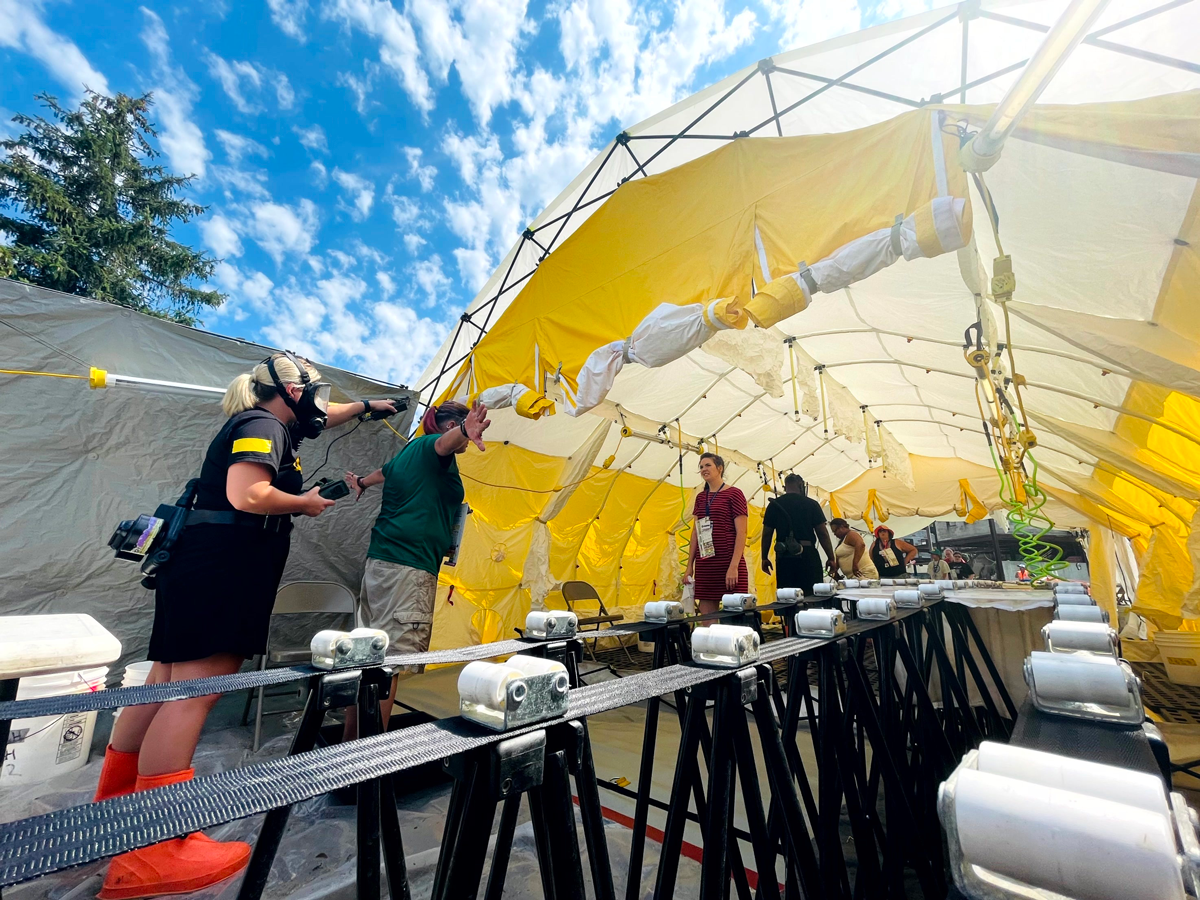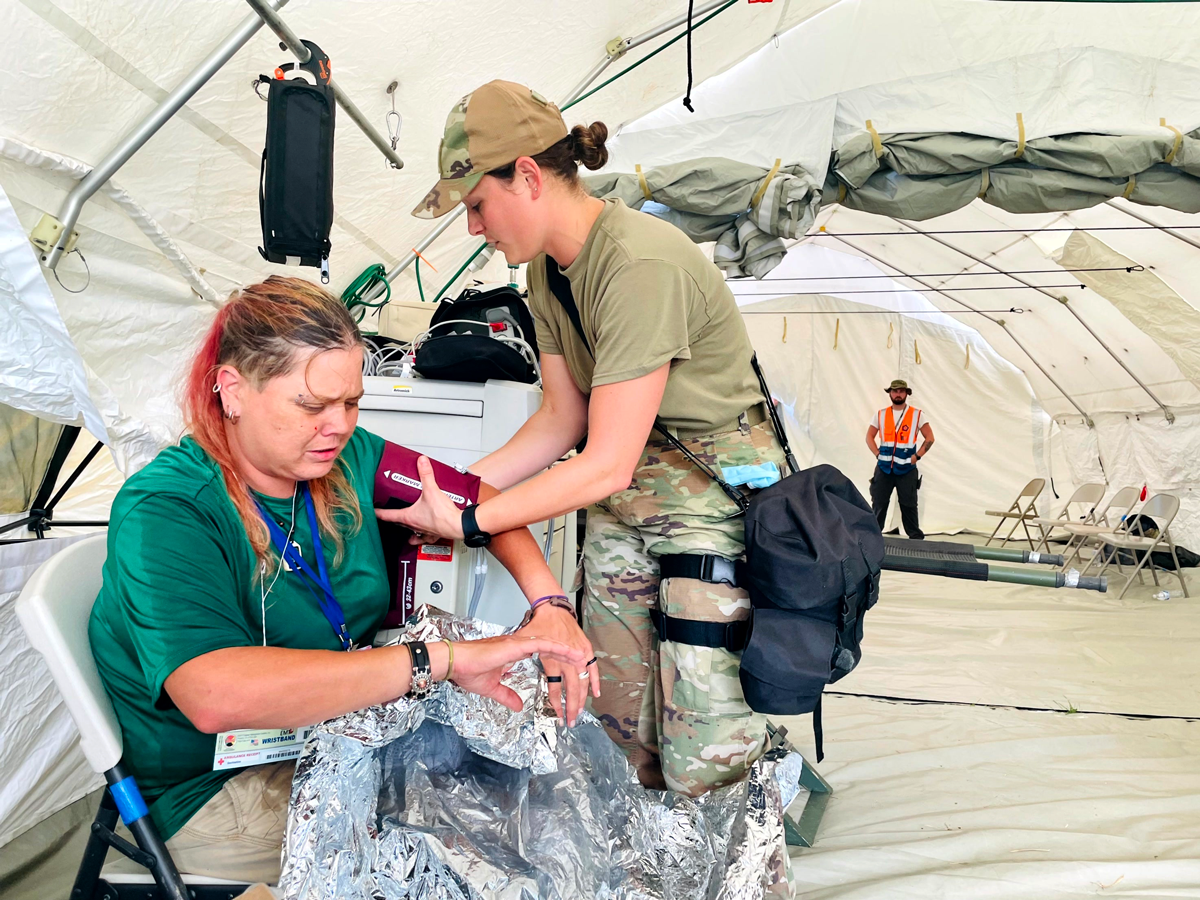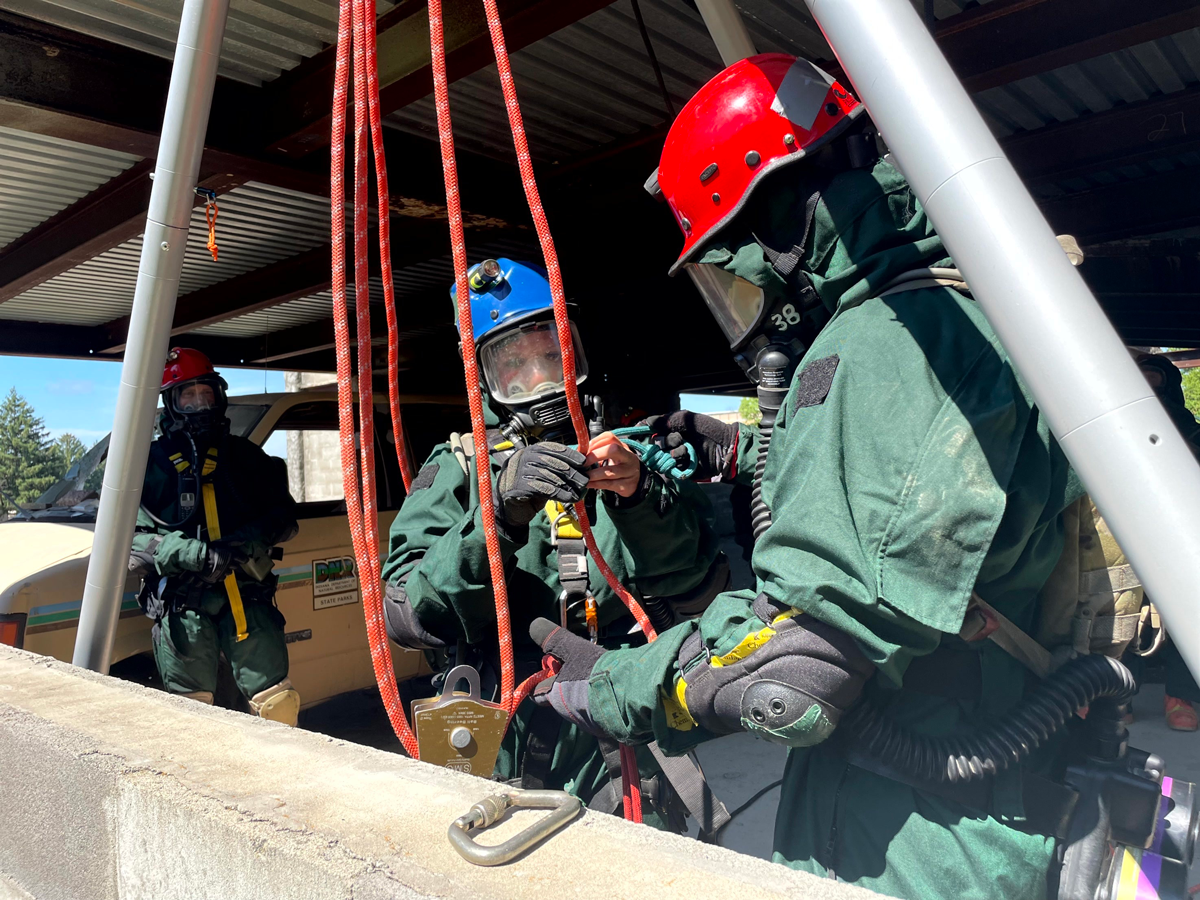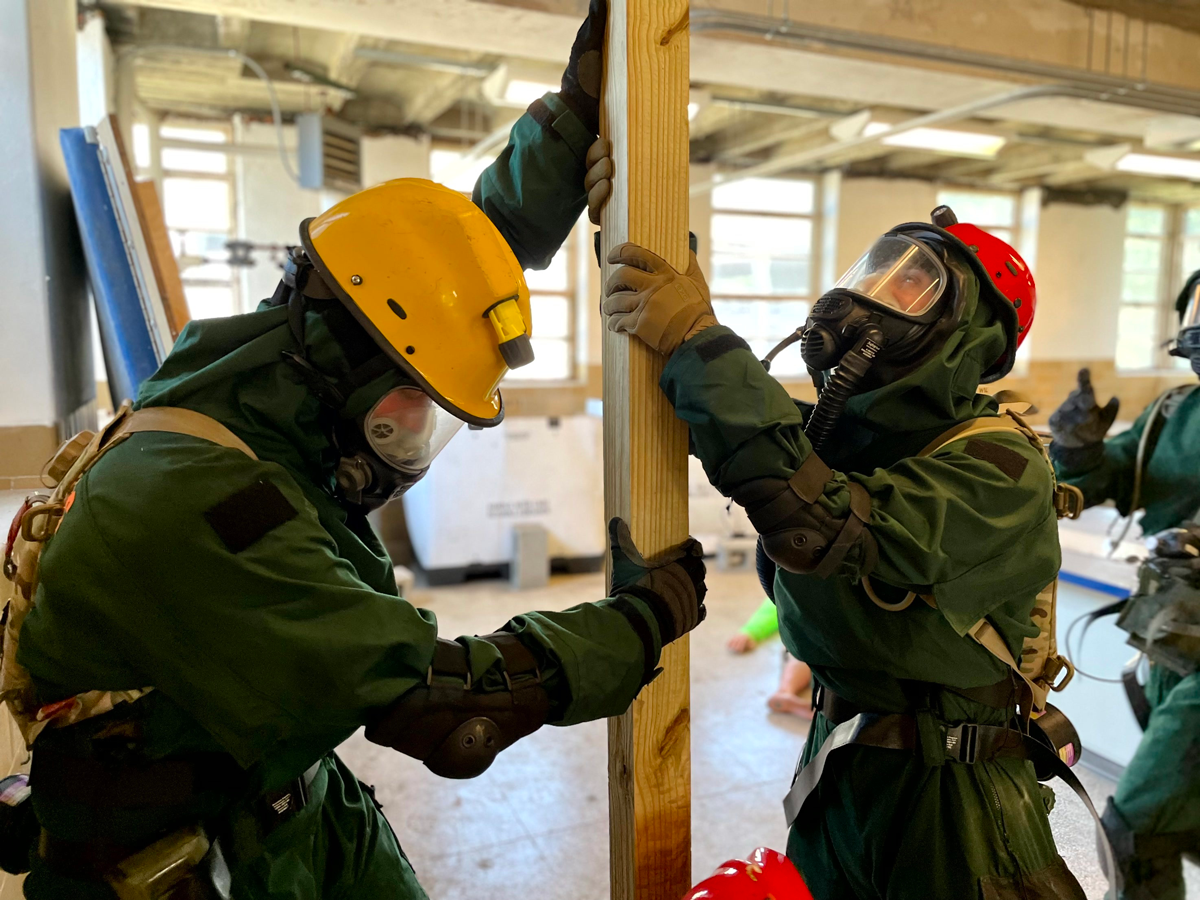Prepare for the worst, hope for the best:
Ohio Homeland Response Force trains for variety of disasters
Story by Capt. Jordyn Craft, Ohio National Guard Public Affairs
BUTLERVILLE, Ind. (08/30/22)
Civilians stumble, hands reaching for people in full-body hazmat suits, in front of a partially collapsed building with untamed nature escaping between cracks in the cement. It reads as if it were the opening scene for a zombie apocalypse movie script. Yet, this wasn’t a script, it was the start of a realistic training exercise for the Ohio National Guard Homeland Response Force.
About 260 Ohio National Guard Soldiers and Airmen traveled to the 1,000-acre Muscatatuck Urban Training Center, located near Butlerville, for a four-day training event in July that included civilian actors playing victims during various scenarios, which introduced a real-world emotional factor and made it more realistic for the Homeland Response Force (HRF)’s Soldiers and Airmen.
“The facilities here at Muscatatuck give our team the opportunity to test their knowledge and hone their skills in a realistic and challenging environment,” said Col. Kevin W. Lochtefeld, who commands the HRF as well as the Ohio Army National Guard’s 73rd Troop Command. “Training allows us to improve and perfect our processes, so that when our community and civil partners need us, we’re ready.”
Ohio’s HRF supports the Federal Emergency Management Agency’s Region 5 — which, in addition to Ohio, encompasses Illinois, Indiana, Michigan, Minnesota and Wisconsin — and is one of the 10 specialized units (corresponding with the 10 FEMA regions) across the nation that provide enhanced lifesaving capabilities to civil authorities in a chemical, biological, radiological, nuclear and high-yield explosives (CBRNE) environment. Its members are organized into different sub-elements certified to provide mass casualty decontamination, search and extraction operations, medical triage and treatment, command and control, fatality search and recovery, hazardous material detection and site control. At full capacity, the HRF has just over 600 Soldiers and Airmen trained to rapidly respond to an incident within hours of being called.
“We train how we fight, which means that if something real-world happens, none of this will be new to us, we can fall in as a team, set up and get to work,” said Staff Sgt. Zavaughn Moss, the decontamination line noncommissioned officer in charge (NCOIC) with the HRF’s Chemical, Biological, Radiological, Nuclear Task Force (CBRN-TF) and member of the 637th Chemical Company. “Our biggest goal is helping people. We’ve worked some long, hot days, but it’s rewarding to know we are trained and ready to save people if we’re ever activated.”
The CBRN-TF is one of the largest elements within the HRF that, among other things, is responsible for decontamination and mitigating the spread of hazardous materials.
The CBRN-TF is one of the largest elements within the HRF that, among other things, is responsible for decontamination and mitigating the spread of hazardous materials. After activation, these highly-trained Soldiers and Airmen support civil authorities by setting up a decontamination line within 120 minutes of arrival on-site and can process up to 100 casualties per hour at maximum capacity.
“In a mass casualty event, a lot of people will be injured and need help. If the area also has hazardous materials, that’s where we can provide a feeling of safety,” said Ohio Air National Guard Master Sgt. Casey Henkel, Ohio HRF medical element NCOIC and a member of the 121st Medical Group.
Members of the medical element are trained to conduct ropes rescues with the CBRN-TF search and extraction team in full hazmat gear if casualties are trapped in hard-to-reach places, need lifesaving treatment quickly and can’t be evacuated. They deploy with a large cache of medical equipment, including critical resources like ventilators, rapid infusers and mass oxygen distribution systems, with a team of doctors, nurses, physician assistants, medics and respiratory therapists to treat patients.
“This mission is hands-on. Our people, the comradery, the morale, it’s amazing,” said Henkel, who has been a member of the HRF for 15 years. “It’s definitely not a typical office job and that’s what I love about it, but it’s ever-changing, so we have to train to be ready for anything.”
With the potential to be called after catastrophic events including large explosions, tornadoes and hurricanes, even train derailments, the HRF trains in simulated environments for a variety of disasters so that if they get called, they can respond with ready personnel. The actors, who played the roles of various civilian victims, during this training exercise added a real-world emotional factor that traditional simulations can’t provide.
Communication is key to success when operating in a chaotic situation, and conducting regular training allows the Ohio HRF to seamlessly integrate with the local and state government agencies they would support during a real disaster, helping them save lives and protect public health. With so many moving elements in a high-risk environment, command and control (C2) is vital to keeping the mission coordinated.
“Command and control is like the brain and nervous system of the CBRN-TF. We gather, assess and kick out information directly from the scene to the incident command,” said Capt. Timothy Lemon, officer in charge of the CBRN-TF and a member of the 1st Battalion, 137th Aviation Regiment.
HRFs need to be able to assemble and deploy their personnel within six to 12 hours of being called, and the time for training isn’t after arriving on scene. The National Guard is typically the first military organization to respond after a domestic emergency. Large-scale catastrophic events like 9/11, Hurricane Katrina and other disasters highlighted the need for a proactive and properly trained force to respond within a moment’s notice. When lives are on the line, minutes matter.
“I know it sounds cheesy, but I believe in the statement, ‘when called, we respond with ready units,’ because it is who we are; it’s what we do. We’re here to help,” Moss said.
